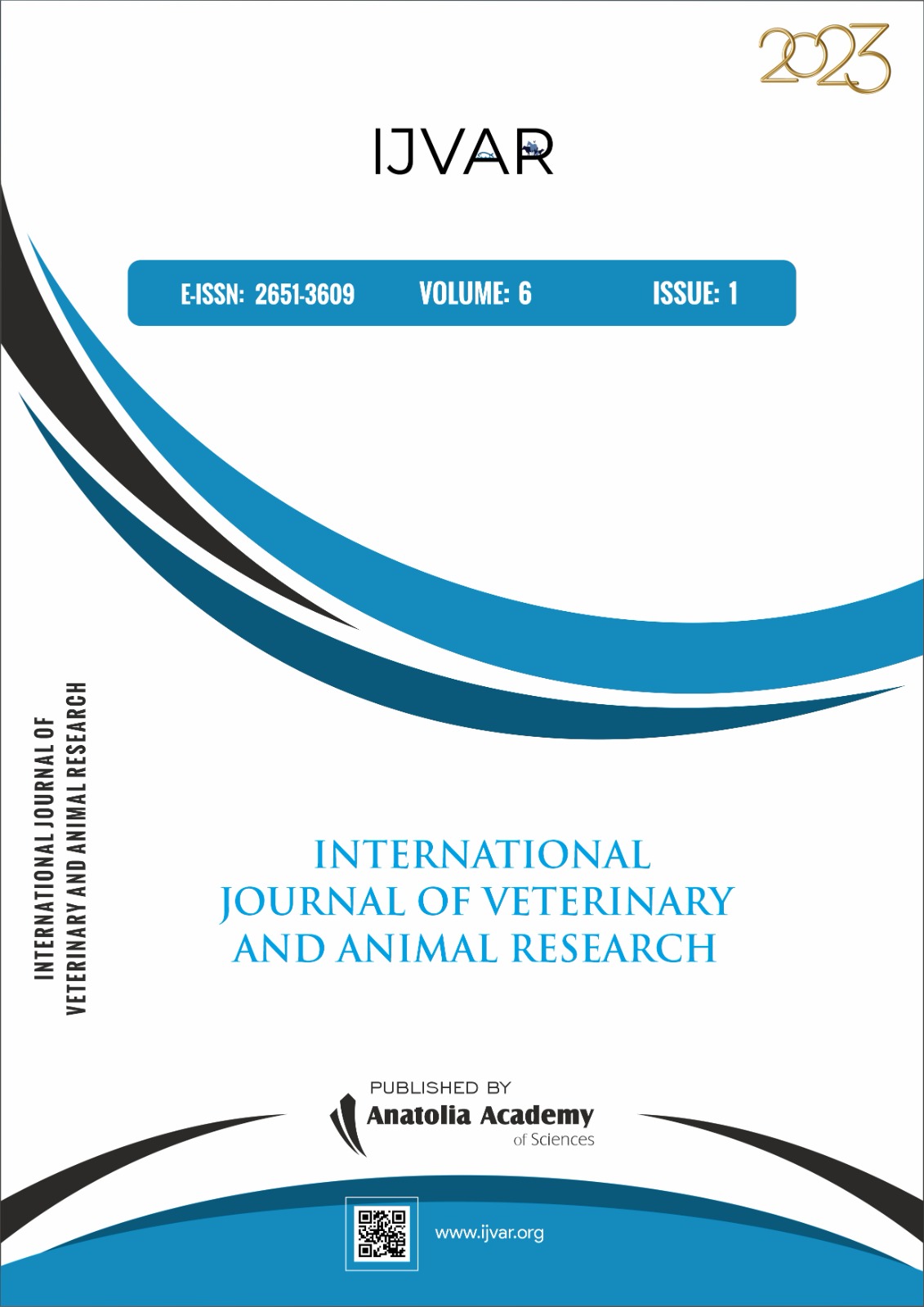Fundamental Molecules in the Pathways and Regulation of Apoptosis
Keywords:
Apoptosis, Bcl-2, caspase, pathways, regulationAbstract
Apoptosis plays a role in many events such as the remodeling of cells starting from embryo formation, the elimination of faulty or dysfunctional cells, and is important for cellular balance. Bcl-2 family and various mediators, of which caspases are the basis, play a role in maintaining this balance in apoptosis. These mediators are important in the initiation, continuation and arrest of apoptosis pathways, and in the regulation of cellular balance. Damages to these mechanisms can cause undesirable results and diseases. In this review, we tried to give information about the pathways of apoptosis and the basic molecules involved in the regulation of apoptosis.
References
Akşit H, Bildik A. (2008). Apoptosis, Yüzüncüyıl Üniversitesi Veteriner Fakültesi Dergisi, 19(1): 55-63.
Chau B N, Cheng EHY, Kerr DA, Hardwick JM. (2000). Aven, a novel inhibitor of caspase activation, binds Bcl-xL and Apaf-1. Molecular Cell, 6(1): 31-40.
Cotter TG, Lennon SV, Glynn JM, Green DR. (1992). Microfilament-disrupting agents prevent the formation of apoptotic bodies in tumor cells undergoing apoptosis. Cancer Research, 52(4): 997-1005.
Droin NM, Green DR. (2004). Role of Bcl-2 family members in immunity and disease. Biochimica et Biophysica Acta (BBA)-Molecular Cell Research, 1644(2-3): 179-188.
Elmore S. (2007). Apoptosis: A Review of Programmed Cell Death. Toxicologic Patholology 35(4): 495–516.
Elumalai P, Gunadharini D, Senthilkumar K, Banudevi S, Arunkumar R, Benson C, Sharmila G, Arunakaran J. (2012). Induction of apoptosis in human breast cancer cells by nimbolide through extrinsic and intrinsic pathway. Toxicology Letters, 215(2): 131-142.
Falschlehner C, Emmerich CH, Gerlach B, Walczak H. (2007). TRAIL signalling: decisions between life and death. The International Journal of Biochemistry & Cell Biology, 39(7-8): 1462-1475.
Giorgi C, Baldassari F, Bononi A, Bonora M, De Marchi E, Marchi S, Missiroli S, Patergnani S, Rimessi A, Suski JM. (2012). Mitochondrial Ca2+ and apoptosis. Cell Calcium, 52(1): 36-43.
Golks A, Brenner D, Fritsch C, Krammer PH, Lavrik IN. (2005). c-FLIPR, a new regulator of death receptor-induced apoptosis. Journal of Biological Chemistry, 280(15): 14507-14513.
Gross A, McDonnell JM, Korsmeyer SJ. (1999). BCL-2 family members and the mitochondria in apoptosis. Genes & Development, 13(15), 1899-1911.
Hengartner MO. (1996). Programmed cell death in invertebrates. Current Opinion in Genetics & Development, 6(1): 34-38.
Hengartner MO, Horvitz HR. (1994). The ins and outs of programmed cell death during C. elegans development. Philosophical Transactions of the Royal Society of London. Series B: Biological Sciences, 345(1313): 243-246.
Karalezli İ. (2016). Apoptoz. International Journal of Scientific and Technological Research, 2(1): 32-36.
Kerr JF, Wyllie AH, Currie AR. (1972). Apoptosis: a basic biological phenomenon with wideranging implications in tissue kinetics. British Journal of Cancer, 26(4): 239-257.
Khan N, Adhami VM, Mukhtar H. (2010). Apoptosis by dietary agents for prevention and treatment of prostate cancer. Endocrine-Related Cancer, 17(1): R39-52.
Larsen BD, Sørensen CS. (2017). The caspase‐activated DN ase: apoptosis and beyond. The FEBS Journal, 284(8): 1160-1170.
Martinvalet D, Zhu P, Lieberman J. (2005). Granzyme A induces caspase-independent mitochondrial damage, a required first step for apoptosis. Immunity, 22(3): 355-370.
Mayer B, Oberbauer R. (2003). Mitochondrial regulation of apoptosis. Physiology, 18(3): 89-94.
Nachmias B, Ashhab Y, Ben-Yehuda D. (2004). The inhibitor of apoptosis protein family (IAPs): an emerging therapeutic target in cancer. Seminars in Cancer Biology, 14(4): 231-243.
Park YH, Jeong MS, Jang SB. (2014). Death domain complex of the TNFR-1, TRADD, and RIP1 proteins for death-inducing signaling. Biochemical and Biophysical Research Communications, 443(4): 1155-1161.
Parrish AB, Freel CD, Kornbluth S. (2013). Cellular mechanisms controlling caspase activation and function. Cold Spring Harbor Perspectives in Biology, 5(6): a008672.
Ramirez MLG, Salvesen GS. (2018). A primer on caspase mechanisms. Seminars in Cell & Developmental Biology, 82: 79-85
Savitskaya M, Onishchenko G. (2015). Mechanisms of apoptosis. Biochemistry (Moscow), 80(11): 1393-1405.
Stennicke HR, Salvesen GS. (2000). Caspases–controlling intracellular signals by protease zymogen activation. Biochimica et Biophysica Acta (BBA)-Protein Structure and Molecular Enzymology, 1477(1-2): 299-306.
Sukumaran, P, Nascimento Da Conceicao V, Sun Y, Ahama N, Saraiva LR, Selvaraj S, Singh BB. (2021). Calcium signaling regulates autophagy and apoptosis. Cells, 10(8): 2125.
Turner CT, Lim D, Granville DJ. (2019). Granzyme B in skin inflammation and disease. Matrix Biology, 75: 126-140.
Volpe E, Sambucci M, Battistini L, Borsellino G. (2016). Fas–fas ligand: Checkpoint of t cell functions in multiple sclerosis. Frontiers in Immunology, 7: 382.
Vousden KH, Lu X. (2002). Live or let die: the cell's response to p53. Nature Reviews Cancer, 2(8): 594-604.
Wyllie AH. (1980). Glucocorticoid-induced thymocyte apoptosis is associated with endogenous endonuclease activation. Nature, 284: 555-556.
Downloads
Published
How to Cite
Issue
Section
License
Copyright (c) 2023 International Journal of Veterinary and Animal Research (IJVAR)

This work is licensed under a Creative Commons Attribution-NonCommercial-NoDerivatives 4.0 International License.







